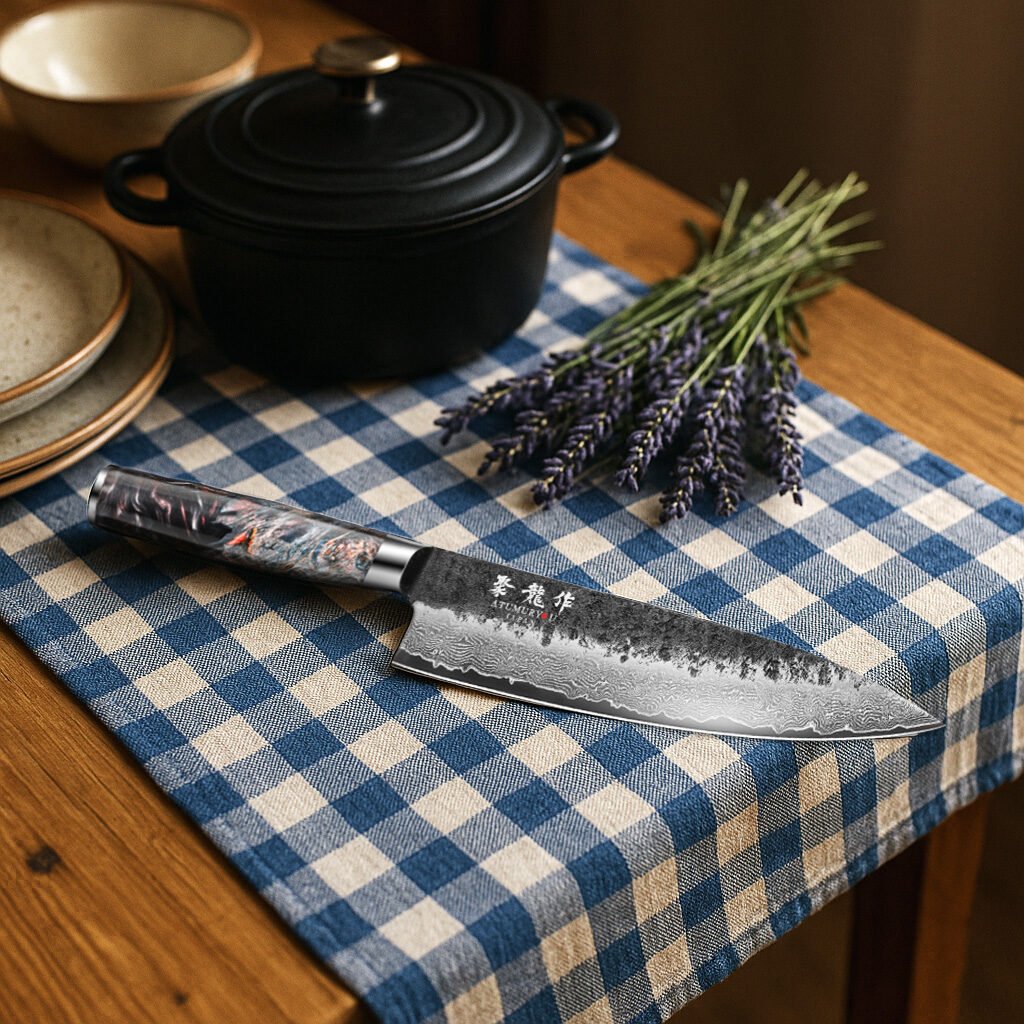Beautiful Plants For Your Interior

A high-quality Japanese chef knife is more than just a kitchen tool — it’s an investment in precision, craftsmanship, and culinary artistry. But how long can you expect it to last? With proper care, a Japanese chef knife can serve you faithfully for decades — sometimes even a lifetime. In this post, we’ll explore the factors that determine the lifespan of your knife and how to ensure it stays razor-sharp and ready for years to come.
- What Is the Typical Lifespan of a Japanese Knife?
If you purchase a well-made Japanese knife — especially one crafted from premium steels like SG2, VG10, or Blue #2 — and care for it properly, it can last 15 to 30 years or more. In fact, many professional chefs continue to use the same knife throughout their entire career. Some Japanese families even pass down their knives from one generation to the next.
However, longevity isn’t guaranteed. The way you treat your knife — from the foods you cut to how you clean and store it — will ultimately determine whether your blade lasts for decades or deteriorates in a few short years.
- Key Factors That Impact Knife Longevity
a. Steel Type & Blade Hardness
Japanese knives are typically made from harder steel (HRC 60–65), which allows for an incredibly sharp and long-lasting edge. However, this also means the knife is more brittle, and improper use (e.g., cutting bones or prying) can lead to chipping.
High-end steels like SG2 offer excellent edge retention and corrosion resistance, ideal for long-term use.
Softer stainless steels may be more forgiving but require more frequent sharpening.
b. Cutting Surface
Using the wrong cutting board is one of the most common reasons knives dull or get damaged prematurely. Avoid glass, stone, or ceramic surfaces.
Recommended surfaces: End-grain wood boards (e.g., hinoki or walnut) or soft plastic.
Hard surfaces will chip or roll the fine edge of your knife over time.
c. Usage Habits
Even the best knife will degrade quickly if it’s used improperly.
Don’t use it to cut bones, frozen food, or hard-shelled items.
Avoid twisting or prying motions — Japanese knives are designed for slicing, not brute force.
Use proper techniques (like the push-pull or rocking motion) rather than chopping straight down.
d. Maintenance Routine
A well-maintained knife can stay in peak condition for years.
Honing: Use a ceramic honing rod every few uses to maintain edge alignment.
Sharpening: Sharpen on a whetstone (1000–3000 grit for regular use; 6000+ grit for polishing) when honing no longer restores sharpness.
Cleaning: Always hand wash with mild soap and dry immediately. Never leave it in the sink or dishwasher.
Storage: Keep the knife in a sheath, saya, magnetic strip, or knife block — never loose in a drawer.
e. Environmental Factors
Humidity and moisture accelerate rust, especially for carbon steel knives.
Store knives in a dry place.
If using high-carbon steel, apply a light coat of oil after cleaning to prevent oxidation.
- Signs Your Knife May Be Wearing Out
Blade thinning: After many years of sharpening, the blade may become too narrow or unbalanced.
Handle damage: Cracks, splits, or loose rivets can affect safety and performance.
Edge chipping: Repeated chips (especially deep ones) may compromise the knife’s long-term integrity.
Tang looseness: A rattling or unstable blade-handle connection can be dangerous.
If your knife experiences any of these issues, consult a professional sharpener or consider retiring the knife — or repurposing it as a utility blade.
- How to Make Your Knife Last a Lifetime
Here’s a quick checklist for maximizing the lifespan of your Japanese chef knife:
- Use a soft cutting board
- Avoid bones and frozen foods
- Hone regularly, sharpen when necessary
- Hand wash and dry immediately
- Store safely in a sheath or block
- Apply oil (if carbon steel) to prevent rust
- Handle with care — always
Conclusion: Respect Your Knife, and It Will Reward You
Japanese chef knives are not disposable tools — they are expressions of a centuries-old craft. With thoughtful care and mindful use, your knife can remain a faithful partner in your kitchen for decades, offering joy in every slice. Whether you’re a home cook or a professional chef, caring for your knife is part of the art of cooking.